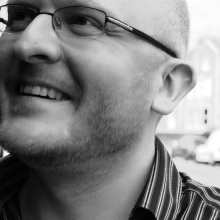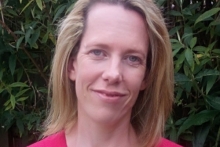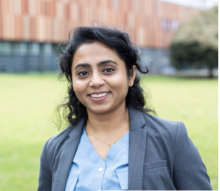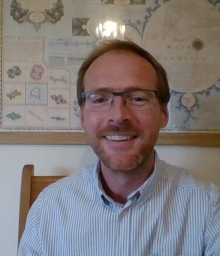
The world is governed by simple laws of physics, but the consequences of these laws is far from simple.
We see immense complexity and beauty around us, and our researchers are studying how this complexity and order arises from simple rules. Through our research, we're trying to understand the world around us, and finding new ways to make it better – with our applied mathematicians currently working on applications in diverse areas including engineering, biology, and medicine.
Research
Our work spans many topics – from the highly abstract, to intensely practical – including the following:
- Nonlinear Dynamics, Dynamical Systems, Chaos, Renormalisation.
- Hamiltonian Dynamics, Integrability, Chaos and Integrability from an algebraic viewpoint.
- Mathematical Biology, Cancer, Medicine, Mathematical Epidemiology, Theoretical Ecology, Differential Equations, Delay Differential Equations.
- Statistical Physics, Complex Systems, Game Theory, Population Dynamics, Collective Behaviour, Networks.
- Geodesics, Differential Geometry, Geometry and Chaos, Astrodynamics (e.g., Solar Sails).
- Homotopy theory, general topology, category theory, applications.
- Ultra-discrete and Tropical Mathematics
Research Excellence (REF 2021)
We're ranked top among modern universities for research in Mathematical Sciences, with a vital and sustainable research environment. Read more about Mathematical Sciences in REF 2021.
REF case study – Improving lithium-ion batteries for electric vehicles through mathematical modelling
Our researchers created mathematical models that provide new methods to improve the lifetime, performance, safety and reliability of batteries — making electric vehicles safer, cheaper, more efficient and able to last longer between charges. This is crucial to the future uptake of electric vehicles and contributes to global goals to reduce emissions, waste and environmental impact. Results include the globally-used software tool Dandeliion for modelling prototypes of new batteries. The work significantly reduces the time and cost for companies developing electric vehicles. We work directly with the automotive industry (including General Motors), industrial partners (including Dassault Systèmes) and the universities of Southampton and Oxford in the UK and McMaster University in Canada. We also contribute to the Faraday Institution that works to power Britain’s battery revolution.
Explore our major research topics
The symmetric barrier billiard system was first introduced by Wiersig, and is an example of a pseudo-integrable dynamical system: a system which consists of multiple copies of an integrable Hamiltonian system, but which itself is not integrable. The motion consists of a particle moving at constant speed inside a rectangle experiencing specular collisions with the boundary (think of a screensaver), but with a partial barrier placed centrally which splits the configuration space into two chambers.
It can be shown that the system can be completely understood by studying the transitions between these two chambers, and this leads to analysis of the autocorrelation function. For a particle moving at with slope equal to the golden mean, we have shown using a renormalization analysis that the correlations at Fibonacci times chaotically explore an invariant surface. Our current aim is to construct a model space which completely describes the behaviour of the renormalization operator which gives rise to this phenomena.
In the realm of Dynamical Systems, an important problem is to decide whether a given system is “solvable” in a reasonably simple manner. If so, the system is usually called “integrable”. Otherwise, its evolution with respect to time is generally unpredictable and very sensitive to initial conditions (a phenomenon commonly known as chaos).
One concept is not intrinsically antonymous with the other, but there seems to be indeed an inverse correlation between the two in practical examples. The usual tool in these cases is differential Galois theory and any of its practical implementations, most notably the symbolic and numerical computation of monodromy matrices. A powerful extension of the above tackles the algebraic structure of higher-order variational equations and the symbolic and numerical computation of Galois (e.g., monodromy and Stokes) matrices for these systems, as well as the true dynamical significance of their projective limit as related to the Galois groupoid. This projective limit is amenable to explicit inference based on the first degrees of the variational systems, but more work needs to be performed in this direction.
More specifically, the dual version of these infinite variational systems has recently proven itself very useful to compute formal first integrals as well as describe their sums explicitly in terms of their generic coefficients, and sometimes easily resummable, as shown in recent work for systems hitherto deemed chaotic. More importantly, in the case of the dual variationals the original system need not be Hamiltonian and the first integrals need not be meromorphic, and effective complete integrability replaces proofs of non-integrability. This is the main short-term goal of this project.
Geodesics are the “straight lines” of curved surfaces, and even on apparently simple surfaces the behaviour of geodesics can be very complex. Recent work established the chaotic nature of geodesics on surfaces defined in terms of spherical harmonics, and current work focuses on the conjugate locus and in particular its bifurcations.
Mathematical models are of major importance in understanding biological and medical systems. Infectious diseases, plant-soil-atmosphere interactions, cancer cells dynamics are all examples of successful synergy between mathematics and biological understanding. Analysis of these models reveals the connections between system components, the effects of these connections, and predicts how the system will evolve if changes in its components occur.
Dynamical systems are used to model how quantities change over time. They have important applications spanning physics, chemistry, biology, cosmology and celestial mechanics, social systems, and more. Dynamical systems often display abrupt changes in behaviour (bifurcations) as some parameter is varied. Examples include changes in the complexity of periodic (repeating) behaviour and transitions from ordered to chaotic behaviour. It's striking and surprising that certain features of these bifurcations turn out to be universal: the same qualitative and even quantitative behaviour is observed across a variety of – apparently very different – systems.
Our research explores and explains this universal behaviour by studying mathematical objects called "renormalisation operators" that act on the dynamical systems themselves in order to capture these phenomena. We use a combination of analytical techniques, including Functional Analysis in infinite-dimensional spaces, and rigorous computer-assisted calculations, to probe the properties of renormalisation operators and prove conjectures about them. Our current programme of work aims to prove a series of conjectures about coupled systems in which individual dynamical systems interact (including the existence and properties of the FS-type fixed point, C-type 2-cycle, bicritical fixed point, and others).
A Solar Sail is a novel type of spacecraft, which uses sunlight for its propulsion. Solar sails are capable of unusual orbits and missions which conventional spacecraft are not. Recent work has focused on the periodic orbits of solar sails in the Earth-Sun system, and in particular their stability.
The goal of Statistical Physics is to understand how the interactions between the individual, sometimes microscopic, elements of physical systems leads to the emergence of large scale properties such as pattern, order and dramatic changes in state. The focus of our current work is to apply principles of statistical physics to model the spatial evolution of languages. Mathematically speaking, we treat individual people as if they were atoms, and their linguistic or cultural features as atomic states, then we try to understand how those states will evolve when millions of people interact.
Most recently we have been using machine learning techniques to measure speech sounds, and our current research focus is on using machine learning to build models of how individuals react to their linguistic environment. Allowing millions of such models to interact will allow us to model the evolution of language more realistically.
One of the fundamental questions in Complex Analysis is, given a (nonlinear) ordinary differential equation, what types of singularities can its solutions develop when analytically continued in the complex plane? That is, given initial data for the equation and a local, analytic solution, where can singularities occur, of what nature are these and moreover, how are these distributed in the complex plane?
Under variation of the initial data, the position of the singularities may change – these are called movable singularities. We study various classes of equations, often motivated from other branches of mathematics or physics, where we look to find answers to the above questions. One famous class of equations are the six Painleve equations, discovered by the French mathematician Paul Painleve and his school at the turn of the 20th century, where the answer to the first question is: the only movable singularities that can occur in solutions are poles. This also means that, apart from a finite number of fixed singularities where branching can occur, the solutions are single-valued in the plane (meromorphic if in absence of fixed singularities).
The Painleve equations play an enormous role in the theory of integrable systems, and have also found applications in Statistical Mechanics, Mathematical Physics and Random Matrix theory, which is why their solutions, the Painleve transcendents, are now also referred to as nonlinear special functions in mathematical literature.
More recently, a geometric approach to the Painleve equations has been developed, assigning to each of the equations its Okamoto's space of initial conditions, which has a rich underlying geometric and algebraic structure.
In our research, we study more general equations and systems of equations, of so-called quasi-Painleve type, generalising this geometric approach to classify such systems by their spaces of initial conditions.
Objects called strange non-chaotic attractors (SNAs) can arise in the study of quasiperiodically forced systems, and are fractal sets upon which nearby trajectories do not separate exponentially (on average). These seemingly paradoxical objects have been of great interest over the past three decades, after first being shown to exist in a paper by Grebogi et al. in 1984.
Our recent contribution to this topic has been in the exploration of the “non-smooth pitchfork bifurcation”. In particular, we have examined scaling properties and the box-counting dimension of attractors arising from this route to SNA. One of the key ingredients in this analysis is the technique of renormalization, which can be used under certain circumstances to show self-similarity of the attractors and to calculate scaling factors describing their growth near the point of transition.
Recent publication highlights
-
A continuum model for lithium plating and dendrite formation in lithium-ion batteries: Formulation and validation against experiment
Sahu, S., and Foster, J. (2023) "A continuum model for lithium plating and dendrite formation in lithium-ion batteries: Formulation and validation against experiment", Journal of Energy Storage
-
A hybrid spatiotemporal model of PCa dynamics and insights into optimal therapeutic strategies
Burbanks, A., Cerasuolo, M., Ronca, R., and Turner, L. (2023) "A hybrid spatiotemporal model of PCa dynamics and insights into optimal therapeutic strategies", Mathematical Biosciences
-
Charge transport modelling of lithium-ion batteries
Richardson, G. W., Foster, J., Ramon, R., Please, C. P., and Ramos, A. M. (2021) "Charge transport modelling of lithium-ion batteries", European Journal of Applied Mathematics
-
Existence of the FS-type renormalisation fixed point
Burbanks, A. (2022). "Existence of the FS-type renormalisation fixed point for unidirectionally-coupled pairs of maps", Journal of Physics A
-
Low dimensional measurement of vowels using machine perception
Burridge, J., and Vaux, B. (2023) "Low dimensional measurement of vowels using machine perception", Journal of the Acoustical Society of America
-
Regularising transformations for complex differential equations with movable algebraic singularities
Kecker, T., and Filipuk, G. (2022) "Regularising transformations for complex differential equations with movable algebraic singularities" Mathematical Physics, Analysis and Geometry
-
The conjugate locus in convex 3-manifolds
Waters, T., and Cherrie, M. A. (Accepted/In press) "The conjugate locus in convex 3-manifolds", New Zealand Journal of Mathematics
Members
As part of our research in Mathematical Sciences, our Applied Mathematicians are:
Discover our areas of expertise
Applied mathematics, nonlinear and complex systems is one of our areas of research expertise in Mathematics – explore more areas below.
Industrial Mathematics
We're delivering insight into roles of different physical mechanisms within a process to develop practical solutions and guidance in science and industry. Explore our industrial mathematics research.

Operational Research and Decision Analysis
We're researching how we can apply quantitative methodologies, management tools and digital technologies to improve decision-making across multiple sectors.

Research groups
-
Nonlinear and Complex Systems Research Group
We're researching how such complexity and order arises from the simple rules and laws of physics.
-
Logistics, Operational Research and Logistics Group (LORA)
We're applying quantitative methodologies to improve decision-making in diverse fields.
Interested in a PhD in Mathematics?
Browse our postgraduate research degrees – including PhDs and MPhils – at our Mathematics postgraduate research degrees page.






